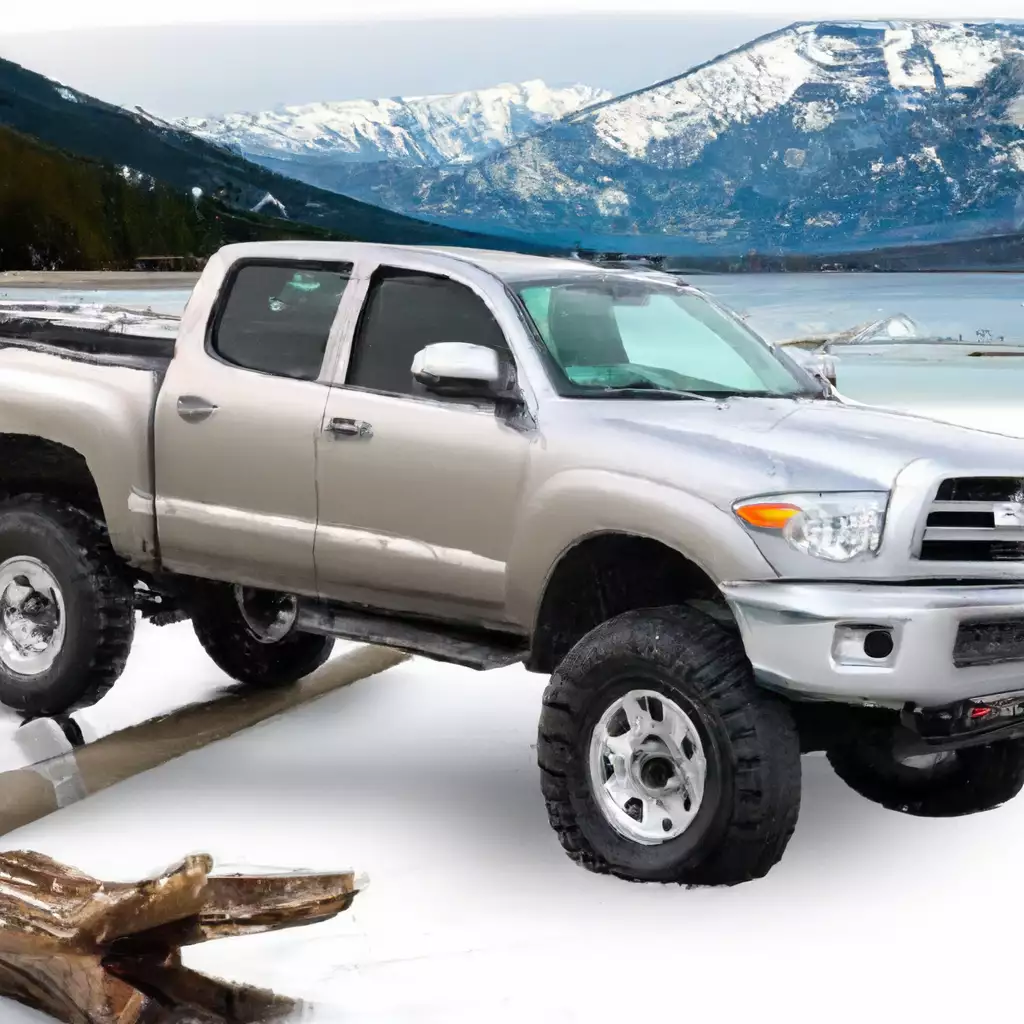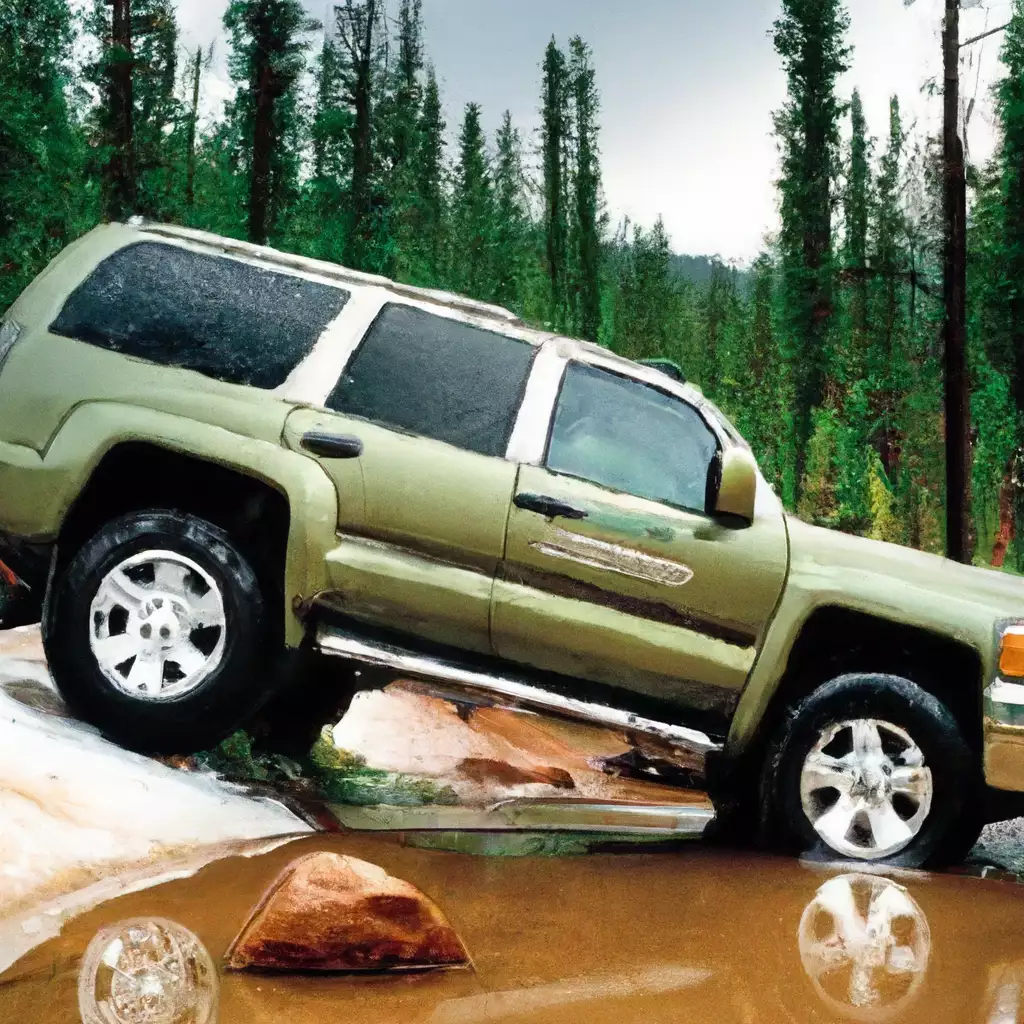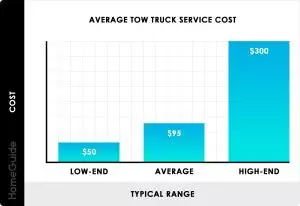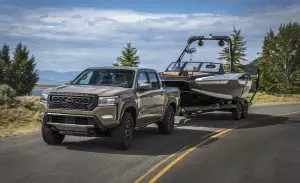When it comes to towing, the choice between AWD (All-Wheel Drive) and 4WD (Four-Wheel Drive) can make a significant impact on your vehicle’s performance and capability. While both options offer enhanced traction and stability, there are distinct differences that may influence your decision. In this article, we will explore the advantages and considerations of AWD and 4WD for towing, allowing you to make an informed choice based on your specific needs.

All-Wheel Drive (AWD)
Definition
All-Wheel Drive (AWD) is a drivetrain system that distributes power to all four wheels of a vehicle, providing individual control to each wheel. This allows for better traction and stability, particularly in challenging road conditions such as snow, ice, or slippery surfaces. AWD systems are typically found in SUVs, crossovers, and some sedans.
How It Works
AWD systems use a combination of sensors, electronic control units, and differentials to monitor and adjust power distribution to each wheel. In normal driving conditions, power is typically sent to the front or rear wheels, depending on the specific vehicle’s setup. However, when the system detects a loss of traction, it can automatically redirect power to the wheels with the most grip, maximizing traction and stability.
Advantages for Towing
AWD can offer several advantages when it comes to towing. The additional traction provided by the AWD system can help improve grip and stability while towing heavy loads, especially in situations where the road surface may be uneven, slippery, or off-road. This can make it easier to start and stop while towing and can also enhance steering control, leading to a safer and more comfortable towing experience.
Disadvantages for Towing
While AWD can provide improved traction and stability for towing, it may have limitations when compared to Four-Wheel Drive (4WD) systems in certain scenarios. AWD systems are typically optimized for on-road driving conditions and may not have the same level of off-road capability as 4WD systems. Additionally, the additional weight of the AWD system can reduce the overall towing capacity of a vehicle, although advancements in technology have minimized this difference in recent years.
Four-Wheel Drive (4WD)
Definition
Four-Wheel Drive (4WD) is a drivetrain system that distributes power to all four wheels simultaneously. Unlike AWD, which typically operates in front-wheel or rear-wheel drive mode and only engages all four wheels when necessary, 4WD systems are designed for off-road use and provide equal power to each wheel. 4WD systems are commonly found in trucks, SUVs, and off-road vehicles.
How It Works
4WD systems use transfer cases and differentials to deliver power to all four wheels simultaneously. In most 4WD systems, the driver can manually engage or disengage 4WD mode based on the driving conditions. When 4WD is engaged, power is evenly distributed to all four wheels, enhancing traction and off-road capability. Some 4WD systems also offer different modes, such as low-range gears, for increased torque and enhanced off-road performance.
Advantages for Towing
4WD provides several advantages for towing, especially in off-road or challenging conditions. The equal power distribution to all four wheels enhances traction and stability, allowing the vehicle to tackle rough terrain or steep inclines with greater ease. 4WD systems are particularly beneficial when towing heavy loads on unpaved surfaces, as the increased torque and traction can prevent wheel slippage and help maintain control of the trailer.
Disadvantages for Towing
While 4WD offers many benefits for towing, it may have some drawbacks as well. 4WD systems tend to be heavier and more complex than AWD systems, which can decrease fuel efficiency and towing capacity. Additionally, engaging 4WD mode on dry, paved roads can cause drivetrain strain and potential damage if not used appropriately. Maintenance and repair costs for 4WD systems are also generally higher compared to AWD systems.
Towing Capacity
AWD Towing Capacity
The towing capacity of an AWD vehicle can vary depending on the specific make and model. Generally, AWD vehicles have slightly lower towing capacities compared to their 2WD counterparts due to the additional weight of the AWD system. However, advancements in technology have allowed some AWD vehicles to have comparable towing capacities to 2WD vehicles. It is important to consult the vehicle’s owner’s manual or manufacturer specifications to determine the exact towing capacity of an AWD vehicle.
4WD Towing Capacity
4WD vehicles are known for their robust towing capabilities, especially in off-road and rugged conditions. The towing capacity of a 4WD vehicle tends to be higher compared to an AWD vehicle, thanks to its enhanced power distribution and off-road capability. However, similar to AWD vehicles, the exact towing capacity of a 4WD vehicle can vary based on factors such as the vehicle’s weight, engine power, and other specifications. Referencing the owner’s manual or consulting with the manufacturer is crucial for accurate towing capacity information.
Comparison
When comparing the towing capacities of AWD and 4WD vehicles, it is important to consider the specific make and model, as well as the vehicle’s engineering and design. In general, 4WD vehicles have higher towing capacities due to their emphasis on off-road performance and robust power distribution. However, advancements in AWD technology have narrowed this gap, and some AWD vehicles can now match or even exceed the towing capacities of older 4WD vehicles. It is essential to evaluate individual vehicle specifications for an accurate and reliable comparison.

Traction and Stability
AWD Traction and Stability
AWD systems excel in providing traction and stability, particularly in adverse weather conditions or on slippery surfaces. By actively distributing torque to the wheels with the most traction, AWD can significantly improve grip, minimizing wheel slippage and enhancing overall stability. This can be especially advantageous while towing, as it helps maintain control and prevents fishtailing or jackknifing of the trailer.
4WD Traction and Stability
4WD systems are primarily designed for tackling challenging terrains, making them highly effective in providing traction and stability in off-road conditions. The equal distribution of power to all four wheels enhances grip and stability, enabling the vehicle to traverse uneven surfaces with confidence. When towing, the 4WD system ensures maximum traction and minimizes the risk of wheel slippage, providing a safer and more controlled towing experience.
Comparison
When compared directly, 4WD systems generally offer superior traction and stability compared to AWD systems, especially in severe off-road conditions. The equal power distribution to all four wheels, coupled with additional off-road features like low-range gears, makes 4WD more capable in challenging terrains. However, for on-road driving and moderate towing needs, AWD systems typically provide adequate traction and stability, making them a reliable choice.
Terrain Compatibility
AWD Terrain Compatibility
AWD systems are well-suited for a wide range of terrains and road conditions. Their ability to swiftly adapt power distribution to each wheel allows for improved performance and traction on slippery, wet, or icy surfaces. While AWD systems may not have the same level of off-road capability as 4WD systems, they can handle light off-roading and moderate terrains with ease, making them versatile for various towing scenarios.
4WD Terrain Compatibility
4WD systems are specifically engineered for off-road use and are designed to handle rugged terrains and challenging environments. With enhanced traction, torque, and grip, 4WD vehicles can conquer steep inclines, rocky terrains, and muddy surfaces. This makes them highly suitable for towing in harsh off-road conditions, such as when traversing unpaved roads or towing trailers through mountainous terrains and wilderness areas.
Comparison
In terms of terrain compatibility, 4WD systems surpass AWD systems in off-road performance and rugged terrains. While AWD systems excel in providing traction and stability on slippery or uneven surfaces, they may not have the necessary features, such as low-range gears or locking differentials, to tackle extreme off-road conditions that 4WD systems can handle with ease. AWD systems, however, are more than sufficient for on-road towing needs or moderate off-roading situations.
Handling and Maneuverability
AWD Handling and Maneuverability
AWD vehicles typically offer confident handling and maneuverability on both dry and wet roads. The balanced power distribution to all four wheels enhances the overall stability, allowing for improved control and responsive steering. AWD vehicles generally feel more planted and predictable while towing, offering a smooth and comfortable driving experience. The added stability and grip provided by the AWD system can instill confidence in the driver, particularly when navigating challenging road conditions.
4WD Handling and Manoeuvrability
4WD vehicles are designed to handle challenging terrains, and as such, they may exhibit different handling characteristics compared to AWD vehicles. While 4WD systems provide exceptional traction and stability off-road, they might not offer the same level of agility and handling precision as AWD systems on paved roads. The robust nature of 4WD systems can make them feel stiffer and less responsive during everyday driving situations, although advancements in technology have made modern 4WD setups more refined and capable for both on-road and off-road use.
Comparison
When it comes to handling and maneuverability, AWD systems generally provide a more agile and responsive driving experience on regular roads. Their ability to distribute power to individual wheels allows for better traction and control, resulting in improved handling and cornering capabilities. Conversely, while 4WD systems might feel less nimble during on-road driving, their off-road prowess and enhanced stability make them ideal for towing in challenging or rough terrains.
Fuel Efficiency
AWD Fuel Efficiency
AWD systems traditionally consume more fuel compared to 2WD vehicles due to the added weight and power requirements of the system. Distributing power to all four wheels inherently increases drag and energy demands, resulting in reduced fuel economy. However, advancements in technology have led to the development of more efficient AWD systems, with some vehicles achieving fuel efficiency figures similar to their 2WD counterparts, especially during normal driving conditions when the AWD system is not actively engaged.
4WD Fuel Efficiency
Similar to AWD systems, 4WD vehicles generally experience decreased fuel efficiency compared to 2WD counterparts. The constant engagement of all four wheels and the additional weight of the 4WD system contribute to higher energy consumption. However, modern 4WD systems often feature selectable or part-time modes that allow the driver to disengage 4WD when not needed, such as during regular on-road driving. Utilizing these features can help mitigate the impact on fuel efficiency and optimize consumption.
Comparison
When comparing fuel efficiency, it is important to consider both AWD and 4WD vehicles’ typical use cases, as fuel consumption varies based on driving conditions and system engagement. In everyday driving situations where optimal traction is not required, both AWD and 4WD systems can have similar fuel efficiency to their 2WD counterparts. However, when engaging the AWD or 4WD systems for off-road driving or towing, fuel efficiency is likely to decrease due to the increased power demands necessary to provide enhanced traction and stability.
Maintenance and Cost
AWD Maintenance and Cost
AWD systems typically require more maintenance compared to 2WD vehicles. The complex nature of the AWD system, including additional components such as differentials, driveshafts, and transfer cases, requires periodic inspections, lubrication, and servicing to ensure optimal performance and longevity. The cost of maintenance for AWD systems is generally higher than 2WD vehicles, primarily due to the increased complexity and the specialized knowledge and equipment required for maintenance and repairs.
4WD Maintenance and Cost
4WD systems also have higher maintenance costs compared to 2WD vehicles, primarily due to the additional components involved and the need for periodic inspections, lubrication, and maintenance. Regular maintenance and servicing of the transfer case, differentials, and drivetrain components are essential for ensuring optimal performance and extending the life of the 4WD system. Similar to AWD systems, the specialized nature of 4WD systems can result in higher repair costs and the need for experienced technicians familiar with 4WD technologies.
Comparison
Both AWD and 4WD systems usually require more maintenance and incur higher costs compared to 2WD vehicles due to their increased complexity and additional components. While the specific maintenance requirements and costs can vary based on the vehicle’s make, model, and manufacturer specifications, it is important to budget for regular maintenance and anticipate potential repair costs associated with these drivetrain systems.
Availability
AWD Availability
AWD systems are widely available across various vehicle types, including SUVs, crossovers, and some sedans. Many automakers offer AWD as an optional feature, allowing buyers to choose between 2WD and AWD configurations based on their preferences and needs. The availability of AWD varies across different vehicle models and trims, with some manufacturers offering AWD as a standard feature on specific models or as an upgrade option.
4WD Availability
4WD systems are predominantly found in trucks, SUVs, and off-road-oriented vehicles. For individuals seeking a vehicle with 4WD capability, there is a wide range of options available from both mainstream and specialized brands. Many truck manufacturers offer 4WD as a standard or optional feature on their pickup trucks, while SUVs and off-road vehicles often include 4WD as a standard feature or offer it as an upgrade option.
Comparison
When it comes to availability, both AWD and 4WD systems offer a wide range of options across various vehicle types. However, it is important to note that not all vehicles within a particular model lineup may offer AWD or 4WD as an option. Buyers interested in AWD or 4WD capabilities should carefully consider the specific vehicle models and trims to ensure they meet their towing requirements and desired drivetrain features.
Conclusion
When deciding between AWD and 4WD for towing purposes, it is crucial to consider the specific towing needs, driving conditions, and terrain compatibility. AWD systems provide excellent traction and stability on slippery or wet surfaces, making them suitable for towing in regular driving conditions or light off-roading. 4WD systems excel in off-road capabilities and rugged terrains, making them ideal for towing heavy loads in challenging off-road environments. It is essential to evaluate the towing capacity, traction and stability, terrain compatibility, handling and manoeuvrability, fuel efficiency, maintenance costs, and availability of AWD and 4WD systems to determine the best option for individual towing needs. Consulting with vehicle manufacturers and professionals in the automotive industry can provide valuable insights and assist in making an informed decision.



